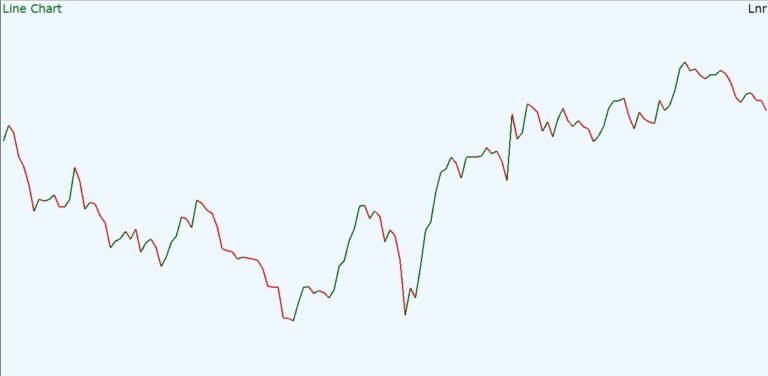
🧠 Fundamental Analysis
Definition:
Fundamental analysis seeks to determine a stock’s intrinsic value by examining a company’s economic performance and fundamentals. It is best suited for long-term investing, guiding decisions to buy/hold/sell based on value rather than price fluctuations.
Or we can say, “Fundamental analysis is used to determine the value of a stock by analyzing a company’s financial statements, management, industry trends, and other … factors that could impact future earnings”
🔍 What Fundamental Analysis Involves
- Financial Statement Analysis
- Review key documents: income statements, balance sheets, and cash flow statements.
- Extract metrics like earnings, revenue, profit margins, cash flow
- Key Ratios & Metrics
- Valuation Ratios:
- P/E (Price‑to‑Earnings)
- P/B (Price‑to‑Book)
- PEG (Price‑to‑Earnings‑Growth)
- Profitability Ratios: EPS, ROA, ROE, profit margins
- Liquidity & Solvency: Current ratio, quick ratio, debt/equity
- Valuation Ratios:
- Qualitative Factors
- Management quality, brand strength, competitive advantage (“economic moat”), corporate governance
- Macro & Industry Context
- Analyze economic trends (GDP, inflation, interest rates), industry growth, competition, regulation
- Analyze economic trends (GDP, inflation, interest rates), industry growth, competition, regulation
🛠 Common Valuation Techniques
- Discounted Cash Flow (DCF): Forecasts future cash flows and discounts them to present value
- Dividend Discount Model (DDM): Values dividend-paying firms based on projected dividends .
- Another practical benchmark is the Graham Number, estimating a safe maximum purchase price from earnings and book value
✅ Steps to Perform Fundamental Analysis
- Choose analysis approach:
- Top-down: Economy → Industry → Company
- Bottom-up: Company → Industry → Economy
- Screen stocks using valuation ratios and profitability metrics.
- Deep dive into financials and compare peer companies.
- Assess qualitative strengths: leadership, durability, and governance.
- Calculate intrinsic value using DCF, dividend models, or key ratios.
- Make an investing decision: buy if market price is below intrinsic value; hold/sell if it exceeds.
🎯 Summary
Fundamental analysis empowers you to evaluate a company beyond its stock price—by inspecting its financial strength, business quality, and external conditions—to determine if it’s a sound long-term investment. It’s best used for building a portfolio based on real value, rather than speculation.
📊 Technical Analysis
Technical analysis (TA) is a method used to forecast future price movements by examining historical price and volume data, based on three key assumptions:
Price reflects everything — market sentiment is built into price
History repeats — patterns tend to recur
Trends follow momentum — moves continue until signs of reversal appear
TA is typically used by short- and medium-term traders (e.g. swing, intraday), though long-term investors sometimes use it to time entry/exit points
🔧 Core Tools & Techniques
🎯 Chart Patterns & Trendlines
- Patterns like head & shoulders, triangles, double tops/bottoms signal potential trend continuation or reversal.
- Trendlines (connecting highs/lows) help identify trend direction and strength
🔄 Support & Resistance
- Support = price below the current price; resistance = price above the current price.
- Breakouts or bounces from these levels often inform trade decisions
📊 Technical Indicators
Traders employ statistical formulas to interpret market behavior:
- Moving Averages (SMA/EMA): Smooth price data to spot trends
- MACD (Moving Average Convergence Divergence): Momentum indicator based on EMAs; useful for
- RSI (Relative Strength Index): Oscillator measuring overbought (>70) or oversold (<30) conditions
- Stochastic Oscillator: Another momentum tool that highlights extremes (overbought/oversold)
- Bollinger Bands: Shows volatility based on standard deviations around a moving average
📈 Volume Analysis
Volume—a measure of shares traded—helps confirm the strength of price moves. Rising volume with price change suggests momentum; low volume may signal weakness
⚙️ How It Works
- Identify a trend using moving averages or trendlines.
- Spot support/resistance levels where price may react.
- Use indicators (MACD, RSI, etc.) to confirm signals and momentum.
- Check volume to validate moves before entering/exiting trades
✅ Pros & Cons
Pros
- Great for entry/exit timing
- Widely applicable across asset types (stocks, forex, commodities)
- Data-driven and can be systematized
Cons
- Can be subjective—different traders may see different patterns
- Doesn’t account for fundamentals (earnings, news, macro factors)
- May fail around unpredictable events or shocks
🧰 Why Traders Use It
- Timing: Helps decide when to buy or sell, not just what to buy
- Emotion control: Using defined rules reduces impulsive decisions .
- Momentum tracking: Captures ongoing trends before they reverse.
🧭 Example: Combining Tools
Say a stock is above its 50- and 200-day moving averages (a bullish sign). You wait for a pullback to a support level, then check if RSI is oversold and volume spikes on a bounce. That might signal a good entry point. Then, you might exit when MACD shows bearish crossover near resistance.
🧭 Quick Comparison
| Feature | Fundamental Analysis | Technical Analysis |
|---|
| Focus | Intrinsic value & company health | Price trends & market psychology |
| Timeframe | Medium to long-term | Short to medium-term |
| Core inputs | Financials, economy, quality | Price charts, volume, indicators |
| Investment style | Buy-and-hold, value investing | Trading, timing entries/exits |
Summary
Technical analysis is about interpreting price and volume history to anticipate future moves. It’s best used for short‑ to mid‑term trading and complements fundamental analysis by providing timing. Like all tools, it’s most effective when combined smartly—with clear rules, risk control, and awareness of its limitations.



